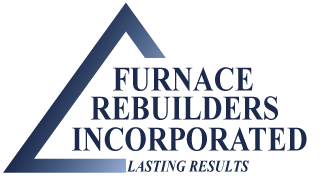
Safety and Environmental
At Furnace Rebuilders, we are deeply committed to maintaining the highest standards of safety and the protection of our environment. Our dedication to these values is reflected in our rigorous safety training programs and our approach to minimizing environmental impact.
Annual OSHA Safety Training: Every member of our team undergoes annual safety training accredited by the Occupational Safety and Health Administration (OSHA). These training sessions are conducted by certified instructors, ensuring that our employees are well-versed in the latest safety protocols and best practices.
Environmental Considerations:
Natural Gas Combustion & Carbon Emissions:
We understand that natural gas combustion in industrial furnaces can lead to carbon dioxide emissions. To address this, we ensure that all burners are properly tuned, minimizing excess carbon emissions and the latest product technology is made available. This practice not only helps protect the environment but also prolongs the lifespan of combustion equipment and reduces fuel consumption.
Electric Furnaces:
Our focus on electrically heated furnaces stems from their higher efficiency compared to traditional methods. By prioritizing electric furnaces, we contribute to a greener industry standard.
Electric Furnaces:
Our focus on electrically heated furnaces stems from their higher efficiency compared to traditional methods. By prioritizing electric furnaces, we contribute to a greener industry standard.
Maintenance for Energy Efficiency:
Regular maintenance of furnace lining and heating systems is crucial. Proper upkeep ensures that energy consumption is kept at a minimum, further reducing the environmental impact of our client’s operations.
OSHA Training Topics:
Our comprehensive OSHA training covers a wide range of topics to ensure the utmost safety of our employees and clients:
Training on the proper use and maintenance of respiratory protective equipment.
Regular per-job and monthly safety talks to address current issues and reinforce safety practices.
Instructions on the use and importance of PPE in maintaining safety.
For employees operating company vehicles, ensuring safe driving practices.
Lock out / tag out protocol to safely isolate hazards from equipment while working electrical, pneumatic and atmospheric hazards.
Procedures for controlling hazardous energies in the workplace
Practical knowledge on using fire extinguishers effectively.
Safety protocols for entering and working in confined spaces.
Training on preventing and mitigating fall-related accidents through proper use and inspection of fall restraints.
Ensuring air quality and safety in work areas.
Following strict safety protocols when handling electrical devices and performing work inside of control cabinets.
Proper use and care of hand tools and hand power tools
http://www.osha.gov/
